Superconducting Quantum Sensors for Fundamental Physics Searches †
Abstract
1. Introduction
2. Characterization Efforts
2.1. Energy Calibration
2.2. System Detection Efficiency
2.3. Simulations
2.4. Backgrounds and Background Reduction
3. Physics Applications
3.1. Direct Dark Matter
3.2. Measuring Squeezed Light
3.3. Secondary Detector for ALPS II
4. Conclusions and Future Work
Author Contributions
Funding
Institutional Review Board Statement
Informed Consent Statement
Data Availability Statement
Acknowledgments
Conflicts of Interest
References
- Irwin, K.D.; Hilton, G.C. Transition-Edge Sensors. In Cryogenic Particle Detection; Enss, C., Ed.; Springer: Berlin/Heidelberg, Germany, 2005; Volume 99, p. 63. [Google Scholar] [CrossRef]
- Lita, A.; Calkins, B.; Pellouchoud, L.; Miller, A.; Nam, S. Superconducting transition-edge sensors optimized for high-efficiency photon-number resolving detectors. In Proceedings of the SPIE Symposium on SPIE Defense, Security, and Sensing, Orlando, FL, USA, 5–9 April 2010; Volume 7681. [Google Scholar] [CrossRef]
- Schmidt, M.; von Helversen, M.; López, M.; Gericke, F.; Schlottmann, E.; Heindel, T.; Kück, S.; Reitzenstein, S.; Beyer, J. Photon-Number-Resolving Transition-Edge Sensors for the Metrology of Quantum Light Sources. J. Low Temp. Phys. 2018, 193, 1243–1250. [Google Scholar] [CrossRef]
- Drung, D.; Abmann, C.; Beyer, J.; Kirste, A.; Peters, M.; Ruede, F.; Schurig, T. Highly Sensitive and Easy-to-Use SQUID Sensors. IEEE Trans. Appl. Supercond. 2007, 17, 699–704. [Google Scholar] [CrossRef]
- Shah, R. A TES Detector for ALPS II: Characterising a Cryogenic, Low-Background, Low Energy Single Photon Detector. Ph.D. Thesis, Mainz University, Mainz, Germany, 2023. [Google Scholar] [CrossRef]
- Rubiera Gimeno, J.A. Optimizing a Transition Edge Sensor Detector System for Low Flux Infrared Photon Measurements at the ALPS II Experiment. Ph.D. Thesis, Staats-und Universitätsbibliothek Hamburg, Hamburg, Germany, 2024. [Google Scholar]
- Meyer, M.; Isleif, K.; Januschek, F.; Lindner, A.; Othman, G.; Rubiera Gimeno, J.A.; Schwemmbauer, C.; Schott, M.; Shah, R. A First Application of Machine and Deep Learning for Background Rejection in the ALPS II TES Detector. Ann. Phys. 2024, 536, 2200545. [Google Scholar] [CrossRef]
- Jay, J.A. An Overview of Macrobending and Microbending of Optical Fibers; Corning Inc.: New York, NY, USA, 2010. [Google Scholar]
- Schwemmbauer, C.; Hadas, G.D.; Hochberg, Y.; Isleif, K.; Januschek, F.; Lehmann, B.V.; Lindner, A.; Lita, A.E.; Meyer, M.; Othman, G.; et al. First direct search for light dark matter interactions in a transition-edge sensor. arXiv 2025, arXiv:2506.18982. [Google Scholar] [CrossRef]
- Dreyling-Eschweiler, J.; Bastidon, N.; Döbrich, B.; Horns, D.; Januschek, F.; Lindner, A. Characterization, 1064 nm photon signals and background events of a tungsten TES detector for the ALPS experiment. J. Mod. Opt. 2015, 62, 1132–1140. [Google Scholar] [CrossRef]
- Bastidon, N. The Cryogenic Photon Detection System for the ALPS II Experiment: Characterization, Optimization and Background Rejection. Ph.D. Thesis, Universität Hamburg, Hamburg, Germany, 2016. [Google Scholar]
- Rubiera Gimeno, J.A.; Januschek, F.; Isleif, K.S.; Lindner, A.; Meyer, M.; Othman, G.; Schwemmbauer, C.; Shah, R. A TES system for ALPS II - Status and Prospects. Proc. Sci. 2023, 449, 567. [Google Scholar] [CrossRef]
- Rubiera Gimeno, J.A.; Isleif, K.S.; Januschek, F.; Lindner, A.; Meyer, M.; Othman, G.; Schott, M.; Shah, R.; Sohl, L. The TES detector of the ALPS II experiment. Nucl. Instrum. Methods Phys. Res. Sect. A Accel. Spectrometers Detect. Assoc. Equip. 2023, 1046, 167588. [Google Scholar] [CrossRef]
- López, M.; Hofer, H.; Kück, S. Detection efficiency calibration of single-photon silicon avalanche photodiodes traceable using double attenuator technique. J. Mod. Opt. 2015, 62, 1732–1738. [Google Scholar] [CrossRef] [PubMed]
- Gerrits, T.; Migdall, A.; Bienfang, J.C.; Lehman, J.; Nam, S.W.; Splett, J.; Vayshenker, I.; Wang, J. Calibration of free-space and fiber-coupled single-photon detectors. Metrologia 2020, 57, 015002. [Google Scholar] [CrossRef]
- Agostinelli, S.; Allison, J.; Amako, K.; Apostolakis, J.; Araujo, H.; Arce, P.; Asai, M.; Axen, D.; Banerjee, S.; Barrand, G.; et al. Geant4—A simulation toolkit. Nucl. Instrum. Methods Phys. Res. Sect. A Accel. Spectrometers Detect. Assoc. Equip. 2003, 506, 250–303. [Google Scholar] [CrossRef]
- COMSOL Multiphysics ® v. 6.2. COMSOL AB, Stockholm, Sweden. Available online: https://www.comsol.com (accessed on 2 September 2025).
- Rubiera Gimeno, J.A.; Isleif, K.S.; Januschek, F.; Lindner, A.; Meyer, M.; Othman, G.; Rivasto, E.; Shah, R.; Schwemmbauer, C. Simulation and measurement of Black Body Radiation background in a Transition Edge Sensor. arXiv 2025, arXiv:2505.08555. [Google Scholar] [CrossRef]
- Cryo Tip Tilt Piston Stages, by JPE. Available online: https://www.jpe-innovations.com/cryo-uhv-products/cryo-tip-tilt-piston-stages/ (accessed on 7 January 2025).
- Hochberg, Y.; Zhao, Y.; Zurek, K.M. Superconducting Detectors for Superlight Dark Matter. Phys. Rev. Lett. 2016, 116, 011301. [Google Scholar] [CrossRef] [PubMed]
- Schwemmbauer, C.; Hochberg, Y.; Isleif, K.S.; Januschek, F.; Lehmann, B.; Lindner, A.; Lita, A.E.; Meyer, M.; Nam, S.W.; Othman, G.; et al. Direct dark matter searches using ALPS II’s TES detection system. Proc. Sci. 2024, 449, 120. [Google Scholar] [CrossRef]
- Fukui, K.; Takeda, S. Building a large-scale quantum computer with continuous-variable optical technologies. J. Phys. B 2022, 55, 012001. [Google Scholar] [CrossRef]
- Cochrane, P.T.; Milburn, G.J.; Munro, W.J. Macroscopically distinct quantum-superposition states as a bosonic code for amplitude damping. Phys. Rev. A 1999, 59, 2631–2634. [Google Scholar] [CrossRef]
- Ralph, T.C.; Gilchrist, A.; Milburn, G.J.; Munro, W.J.; Glancy, S. Quantum computation with optical coherent states. Phys. Rev. A 2003, 68, 042319. [Google Scholar] [CrossRef]
- Endo, M.; Nomura, T.; Sonoyama, T.; Takahashi, K.; Takasu, S.; Fukuda, D.; Kashiwazaki, T.; Inoue, A.; Umeki, T.; Nehra, R.; et al. High-Rate Four Photon Subtraction from Squeezed Vacuum: Preparing Cat State for Optical Quantum Computation. arXiv 2025, arXiv:2502.08952. [Google Scholar] [CrossRef]
- Leonhardt, U. Measuring the Quantum State of Light; Cambridge University Press: Cambridge, UK, 1997; Chapter 4.1.3. [Google Scholar]
- Bähre, R.; Döbrich, B.; Dreyling-Eschweiler, J.; Ghazaryan, S.; Hodajerdi, R.; Horns, D.; Januschek, F.; Knabbe, E.A.; Lindner, A.; Notz, D.; et al. Any light particle search II—Technical Design Report. J. Instrum. 2013, 8, T09001. [Google Scholar] [CrossRef]
- Hallal, A.; Messineo, G.; Ortiz, M.D.; Gleason, J.; Hollis, H.; Tanner, D.; Mueller, G.; Spector, A. The heterodyne sensing system for the ALPS II search for sub-eV weakly interacting particles. Phys. Dark Universe 2022, 35, 100914. [Google Scholar] [CrossRef]
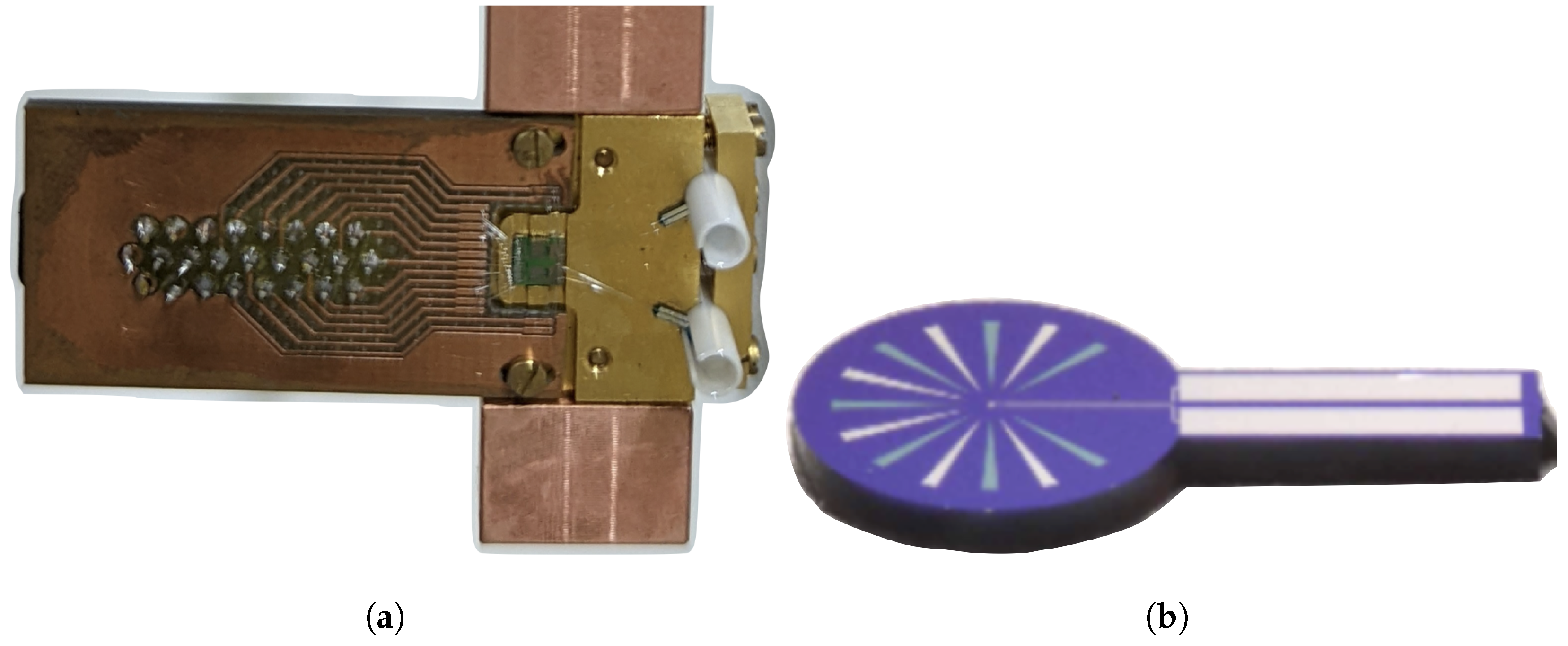
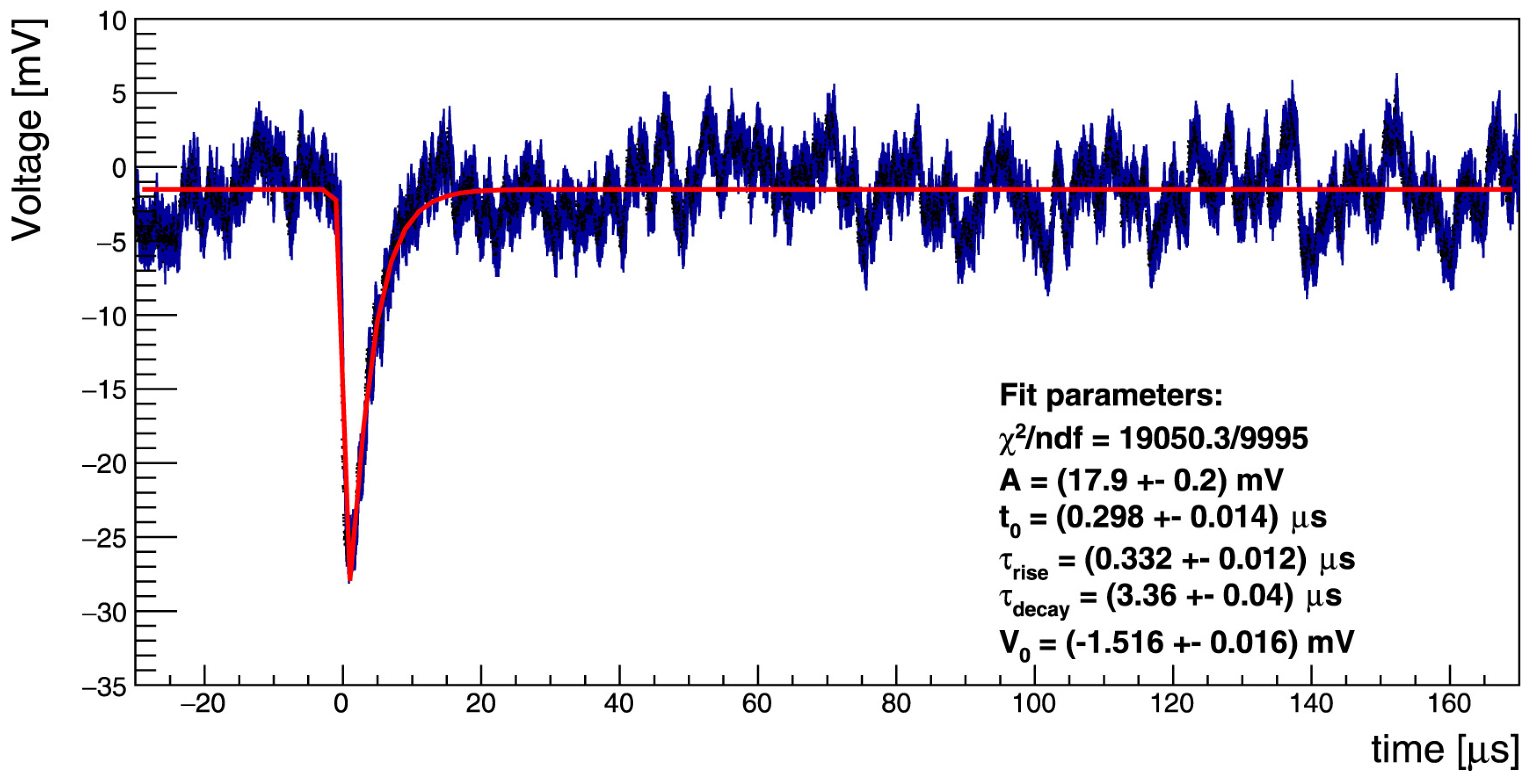
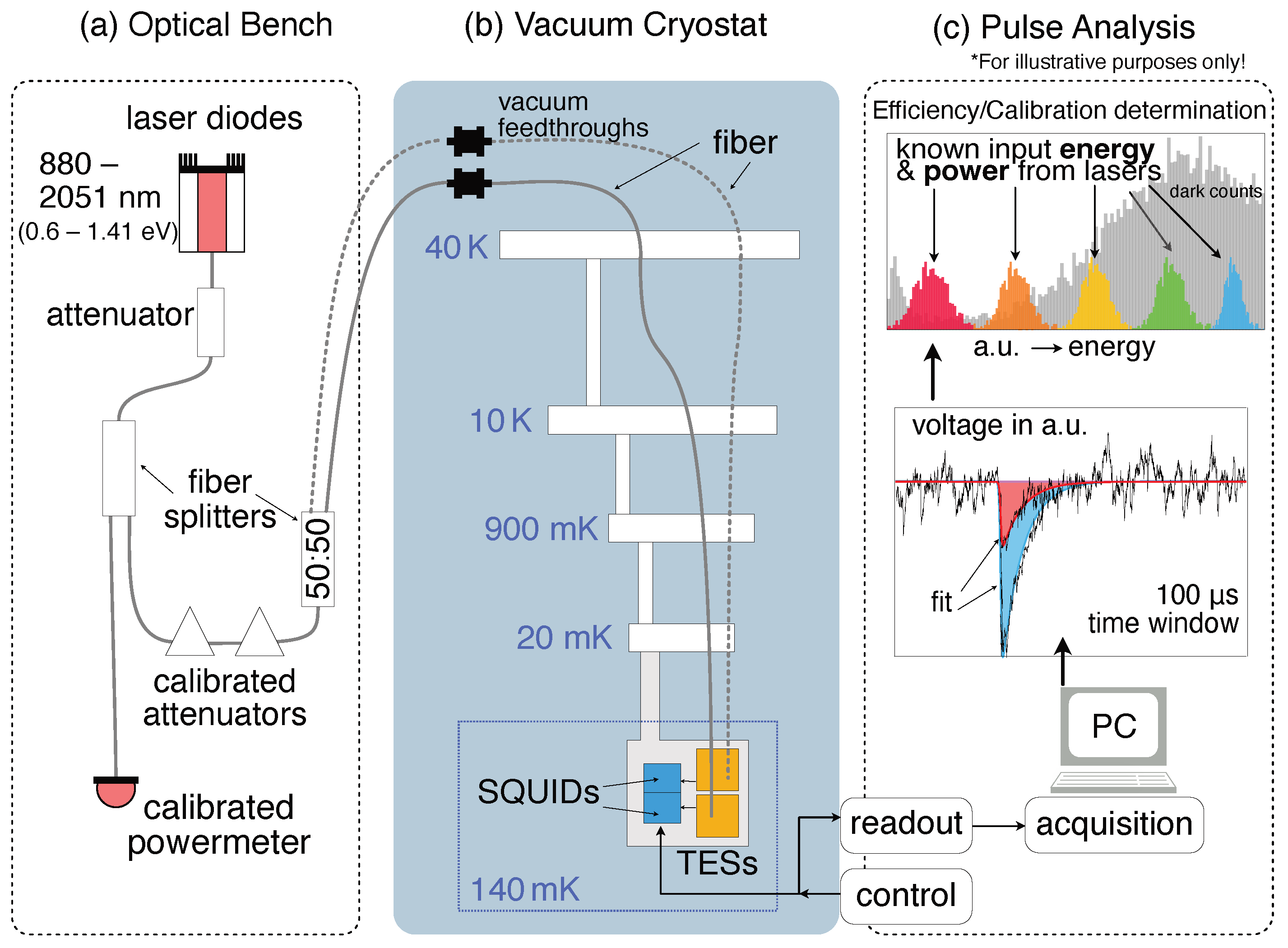
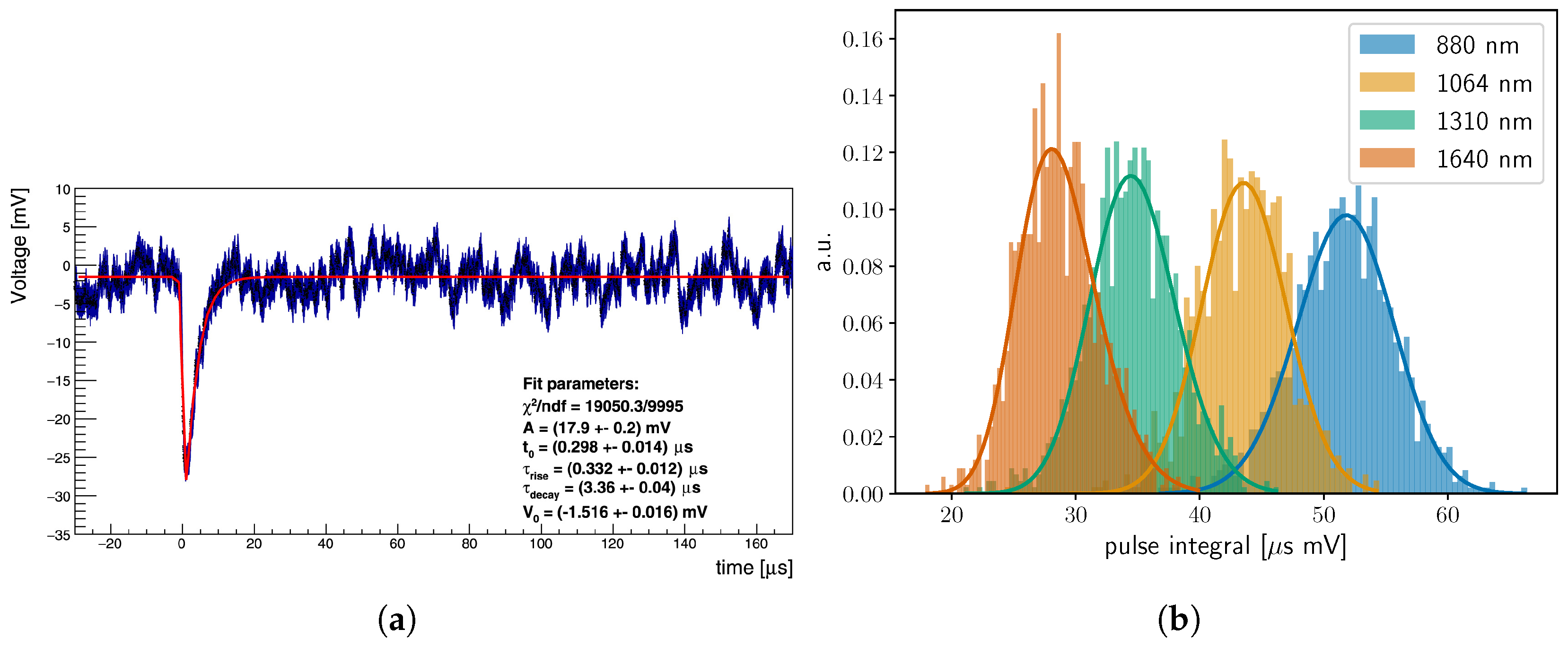
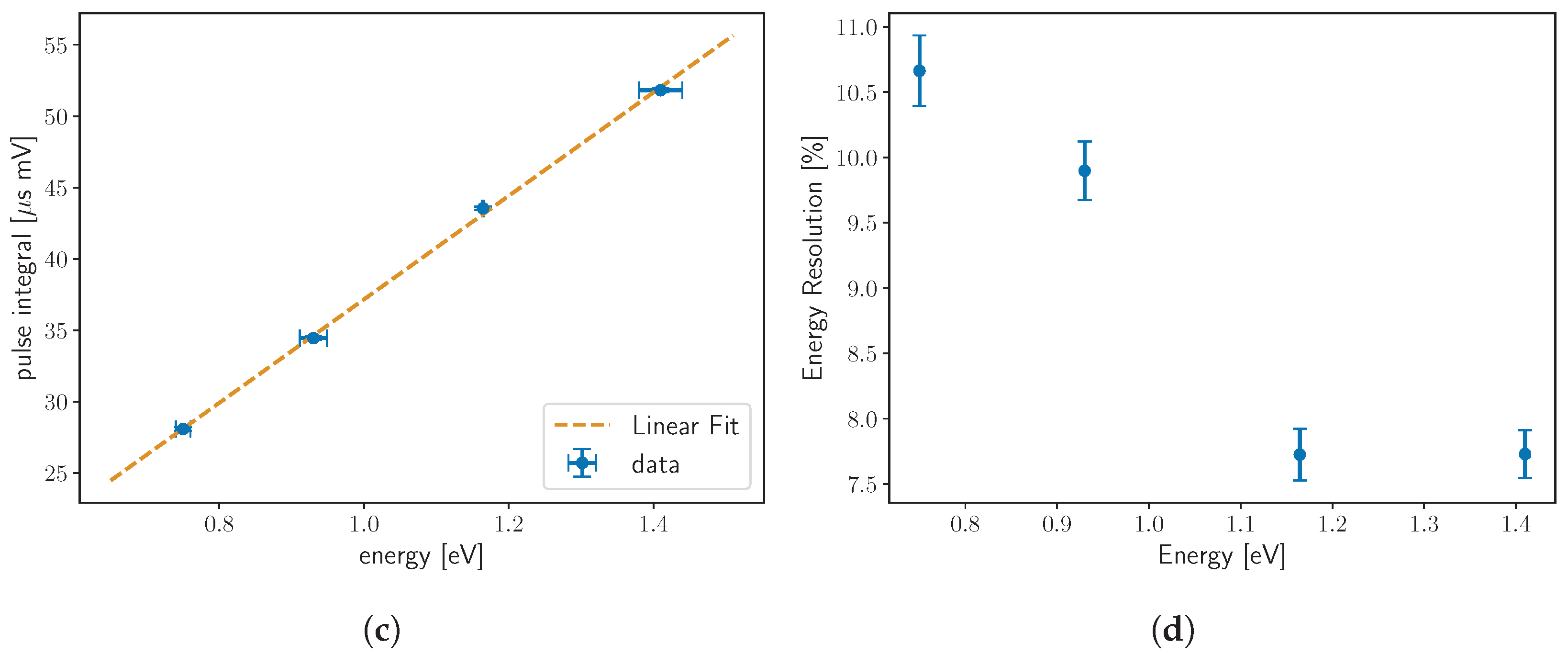


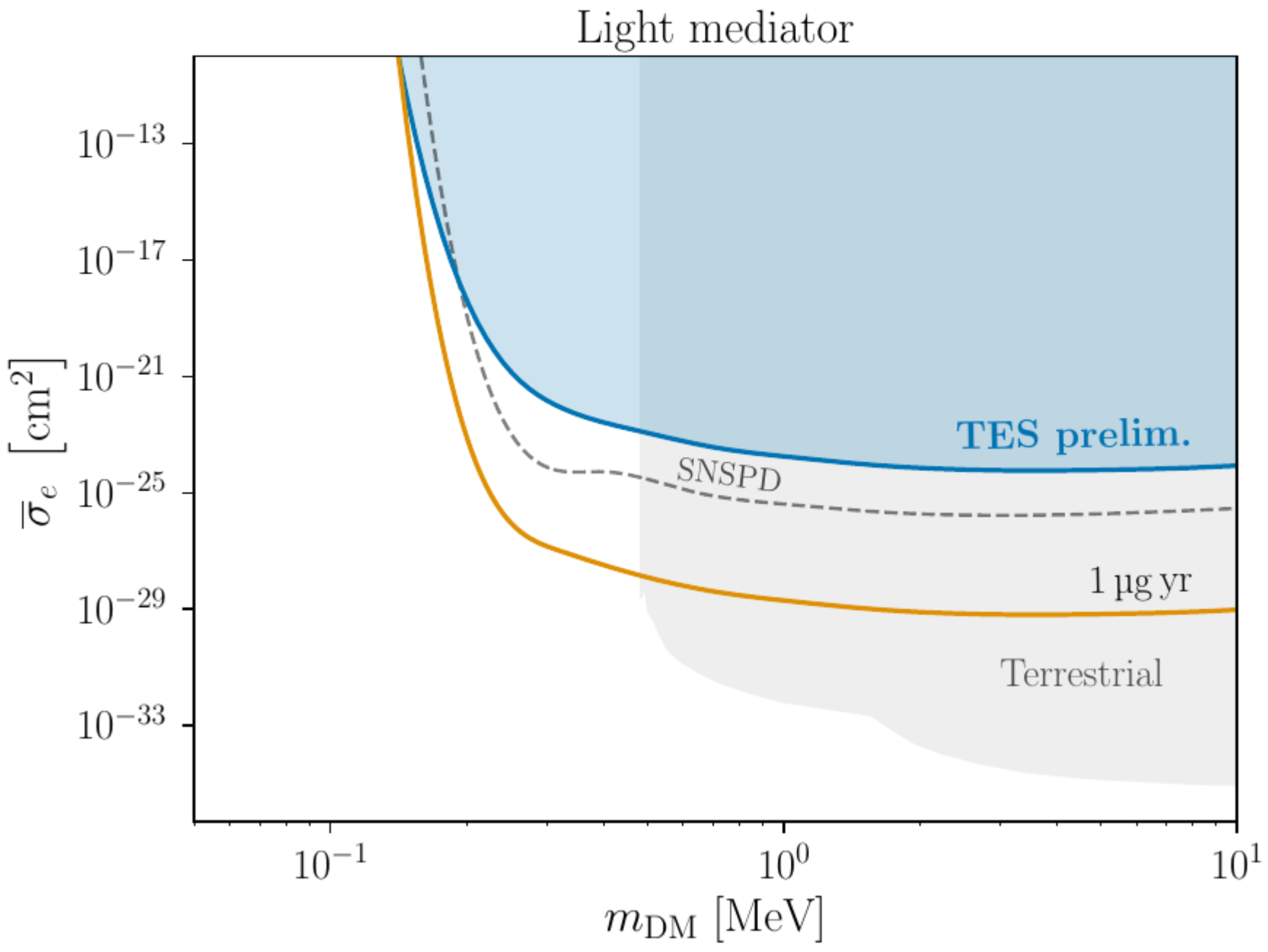
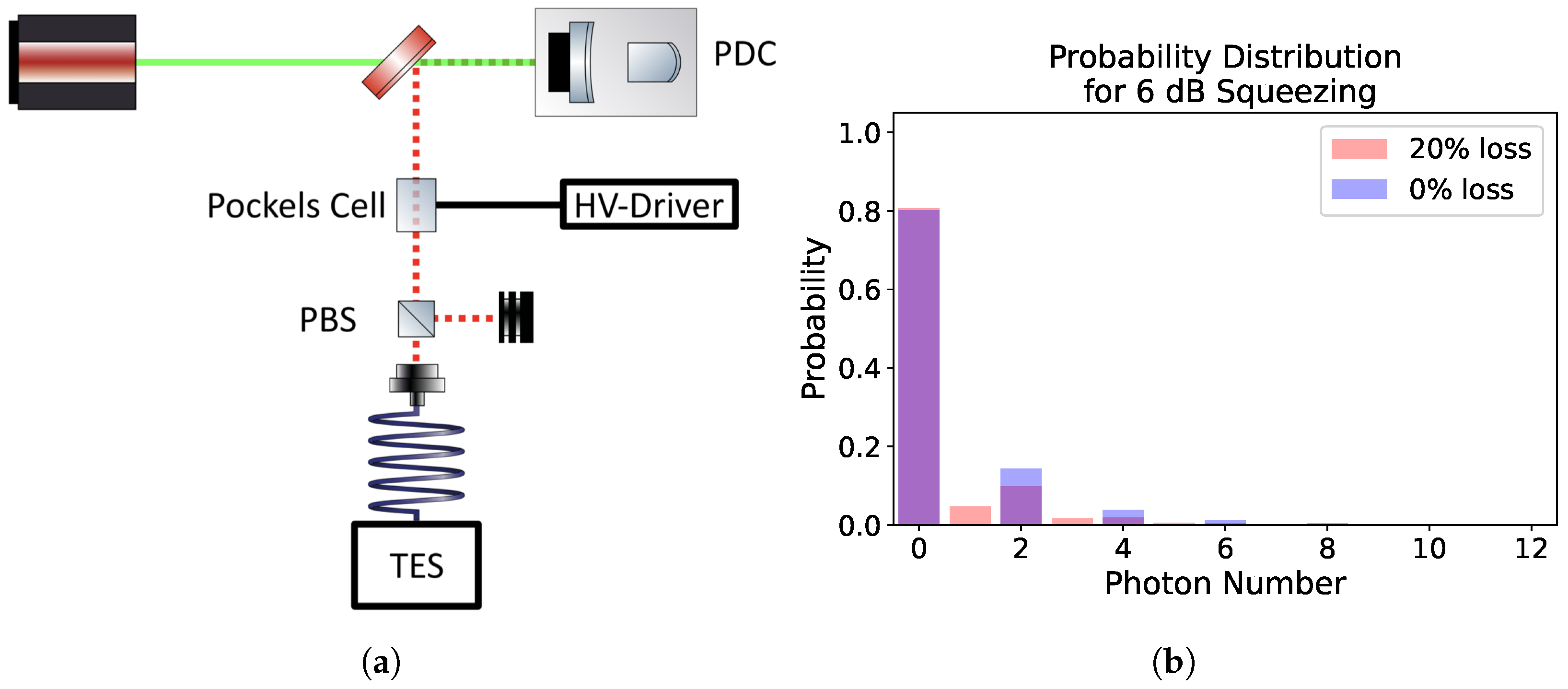
Disclaimer/Publisher’s Note: The statements, opinions and data contained in all publications are solely those of the individual author(s) and contributor(s) and not of MDPI and/or the editor(s). MDPI and/or the editor(s) disclaim responsibility for any injury to people or property resulting from any ideas, methods, instructions or products referred to in the content. |
© 2025 by the authors. Licensee MDPI, Basel, Switzerland. This article is an open access article distributed under the terms and conditions of the Creative Commons Attribution (CC BY) license (https://creativecommons.org/licenses/by/4.0/).
Share and Cite
Othman, G.; Hadfield, R.H.; Isleif, K.-S.; Januschek, F.; Lindner, A.; Meyer, M.; Morozov, D.; Namburi, D.K.; Rivasto, E.; Rubiera Gimeno, J.A.; et al. Superconducting Quantum Sensors for Fundamental Physics Searches. Phys. Sci. Forum 2025, 11, 2. https://doi.org/10.3390/psf2025011002
Othman G, Hadfield RH, Isleif K-S, Januschek F, Lindner A, Meyer M, Morozov D, Namburi DK, Rivasto E, Rubiera Gimeno JA, et al. Superconducting Quantum Sensors for Fundamental Physics Searches. Physical Sciences Forum. 2025; 11(1):2. https://doi.org/10.3390/psf2025011002
Chicago/Turabian StyleOthman, Gulden, Robert H. Hadfield, Katharina-Sophie Isleif, Friederike Januschek, Axel Lindner, Manuel Meyer, Dmitry Morozov, Devendra Kumar Namburi, Elmeri Rivasto, José Alejandro Rubiera Gimeno, and et al. 2025. "Superconducting Quantum Sensors for Fundamental Physics Searches" Physical Sciences Forum 11, no. 1: 2. https://doi.org/10.3390/psf2025011002
APA StyleOthman, G., Hadfield, R. H., Isleif, K.-S., Januschek, F., Lindner, A., Meyer, M., Morozov, D., Namburi, D. K., Rivasto, E., Rubiera Gimeno, J. A., & Schwemmbauer, C. (2025). Superconducting Quantum Sensors for Fundamental Physics Searches. Physical Sciences Forum, 11(1), 2. https://doi.org/10.3390/psf2025011002




